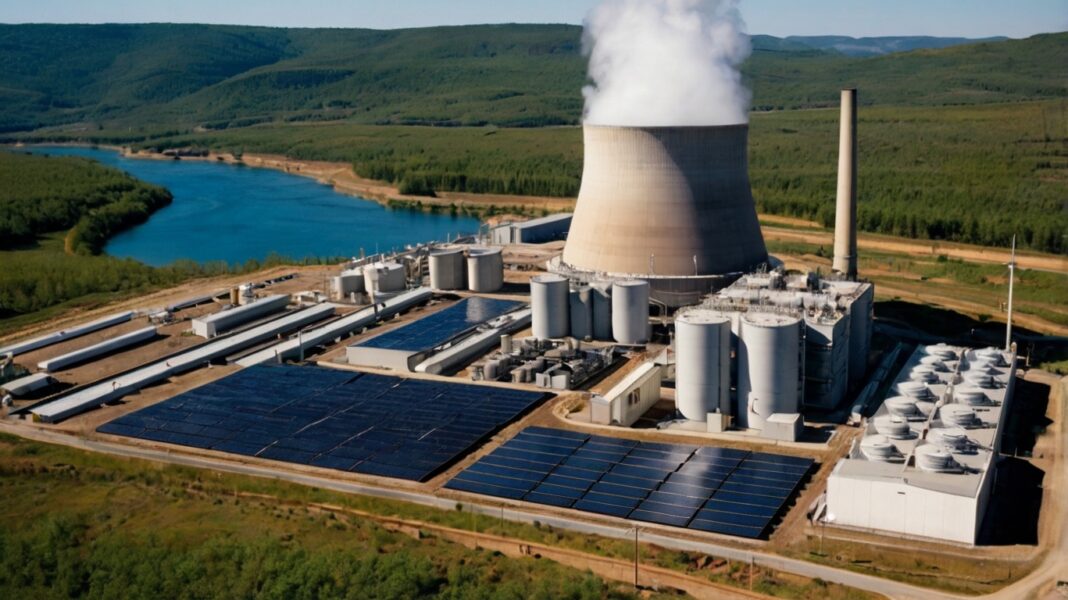Demystifying Modern Power Plants:Power plants have come a long way since the days of coal-fired steam engines. Today, modern power plants are marvels of engineering, utilizing a variety of technologies to generate electricity efficiently.
This blog will take you through the fascinating world of modern power plants, from their types and processes to their environmental impact and future trends.
Types of Modern Power Plants
Modern power plants can be broadly categorized into three types based on the source of fuel they use:
Demystifying Modern Power Plants:
Fossil Fuel Power Plants
Fossil fuel power plants, including coal, natural gas, and oil plants, are the most common type. These plants burn fossil fuels to produce heat, which generates steam to drive turbines. Despite advancements in technology, these plants have a significant environmental impact due to greenhouse gas emissions.
Nuclear Power Plants
Nuclear power plants use nuclear fission to generate heat. Uranium rods are bombarded with neutrons, causing them to split and release a tremendous amount of heat. This heat is then used to produce steam and drive turbines. Nuclear power is highly efficient and produces no greenhouse gas emissions during operation, but it does come with challenges related to radioactive waste disposal and safety.
Renewable Energy Power Plants
Renewable energy power plants harness natural resources like wind, solar, hydro, and geothermal energy to generate electricity. These plants are gaining popularity due to their minimal environmental impact. Wind turbines, solar panels, hydroelectric dams, and geothermal wells are some examples of renewable energy technologies used in power plants.
The Power Generation Process
Understanding how modern power plants convert fuel into electricity involves several key steps:
Fuel Combustion or Energy Capture
In fossil fuel and nuclear power plants, fuel combustion or nuclear reactions generate heat. In renewable energy plants, wind turbines capture wind energy, solar panels harness sunlight, and hydroelectric dams use water flow.
Heat Exchanger Systems
In many modern power plants, tube fin heat exchangers play a crucial role. These devices transfer heat from the combustion process or nuclear reactions to water, creating steam. The efficiency of these heat exchangers significantly impacts the overall efficiency of the power plant.
Steam Generation
The generated heat converts water into steam, which is then directed to drive turbines. The high-pressure steam spins the turbines, converting thermal energy into mechanical energy.
Electricity Generation
The spinning turbines are connected to generators, which convert mechanical energy into electrical energy through electromagnetic induction. This electricity is then transmitted to the power grid for distribution.
Environmental Impact and Sustainability Measures
While power plants are essential for meeting our energy needs, they also have environmental implications. Modern power plants are adopting various sustainability measures to mitigate their impact:
Carbon Capture and Storage (CCS)
Some fossil fuel power plants are implementing CCS technology to capture carbon dioxide emissions and store them underground, preventing them from entering the atmosphere.
Use of Renewable Energy
Increasing the share of renewable energy sources in the energy mix reduces the reliance on fossil fuels and lowers greenhouse gas emissions. Wind, solar, and hydroelectric power are leading the way in this transition.
Improving Efficiency
Advancements in technology, such as the development of more efficient tube fin heat exchangers and turbines, help improve the overall efficiency of power plants. Higher efficiency means less fuel consumption and fewer emissions for the same amount of electricity generated.
Future Trends in Power Plant Technology
The future of power plants is marked by exciting trends and innovations:
Smart Grid Integration
The integration of modern power plants with smart grids enables better monitoring, control, and distribution of electricity. Smart grids enhance the reliability and efficiency of the power supply.
Advanced Nuclear Reactors
Next-generation nuclear reactors, such as small modular reactors (SMRs) and thorium reactors, promise safer and more sustainable nuclear power. These reactors aim to address the limitations of traditional nuclear power plants.
Energy Storage Solutions
Energy storage technologies, such as advanced batteries and pumped hydro storage, are crucial for stabilizing the grid and storing excess energy generated by renewable sources. This ensures a consistent power supply even when the sun isn’t shining or the wind isn’t blowing.
Conclusion
Modern power plants are at the heart of our energy infrastructure, providing the electricity needed to power our homes, industries, and economies. Understanding how these plants work helps us appreciate the complexities involved in generating electricity and the ongoing efforts to make power generation more sustainable.




